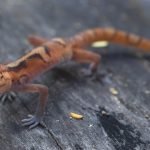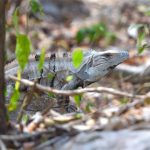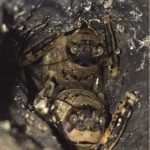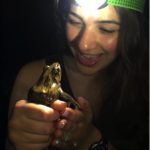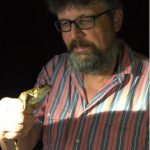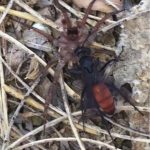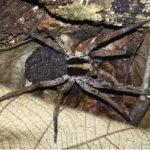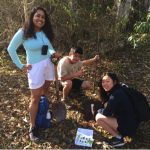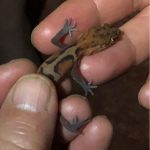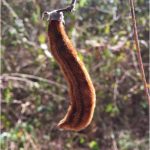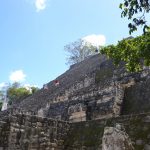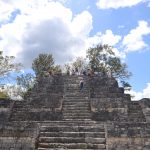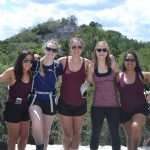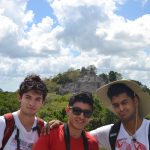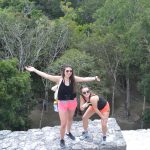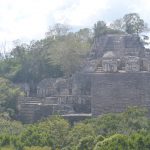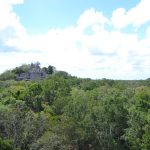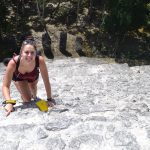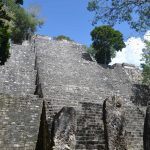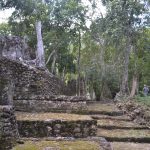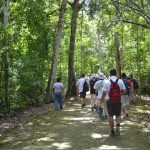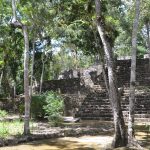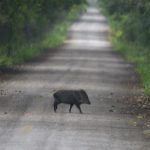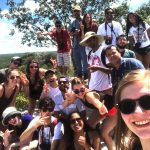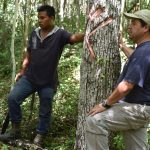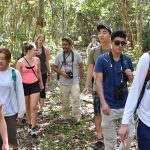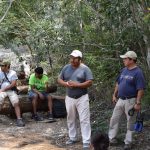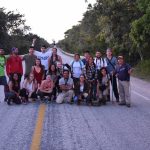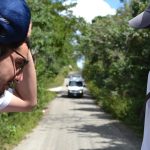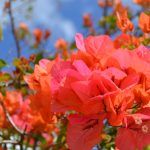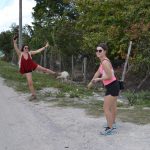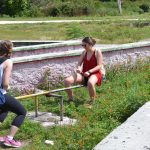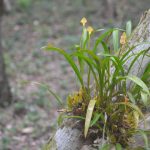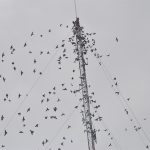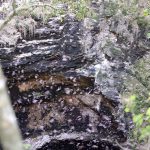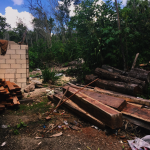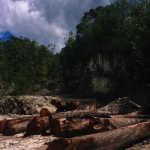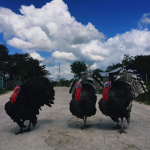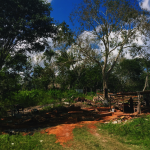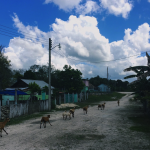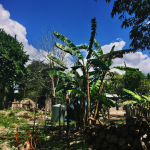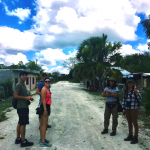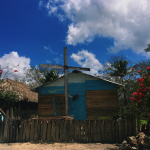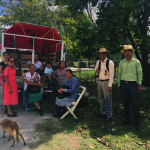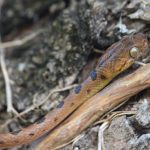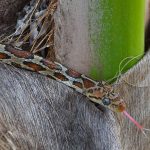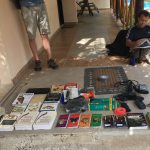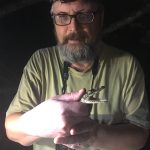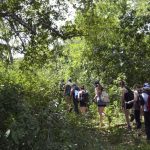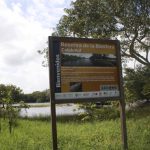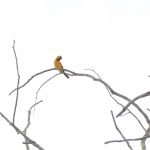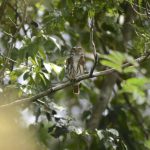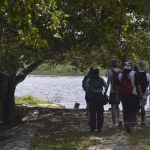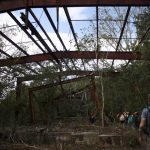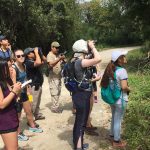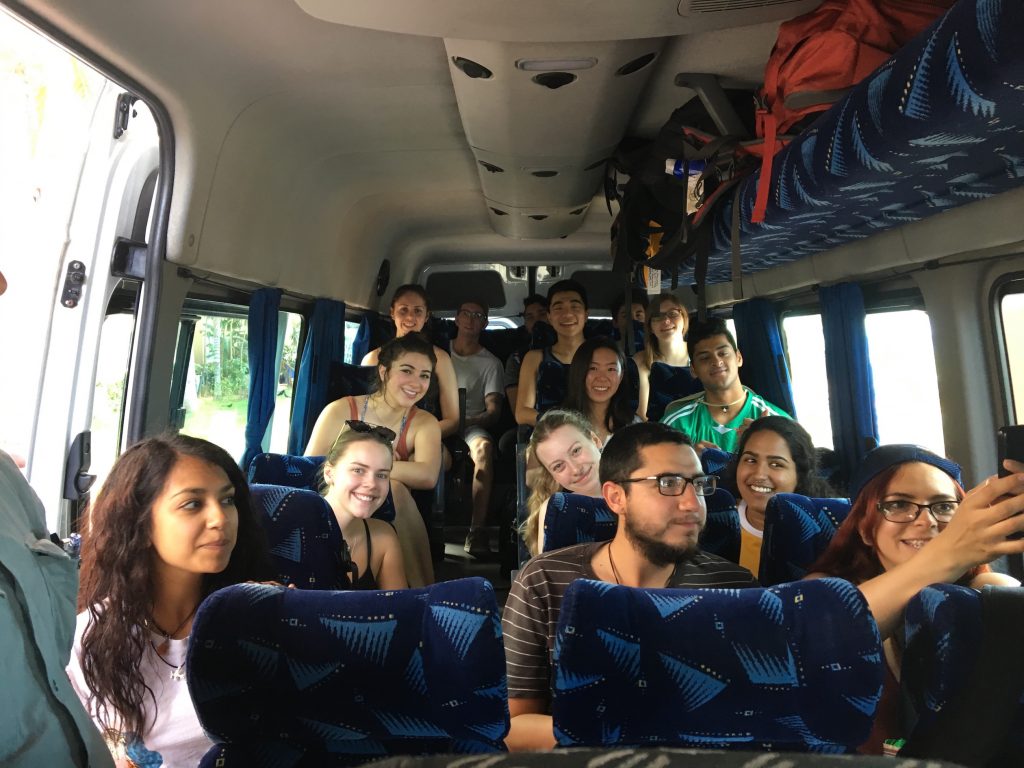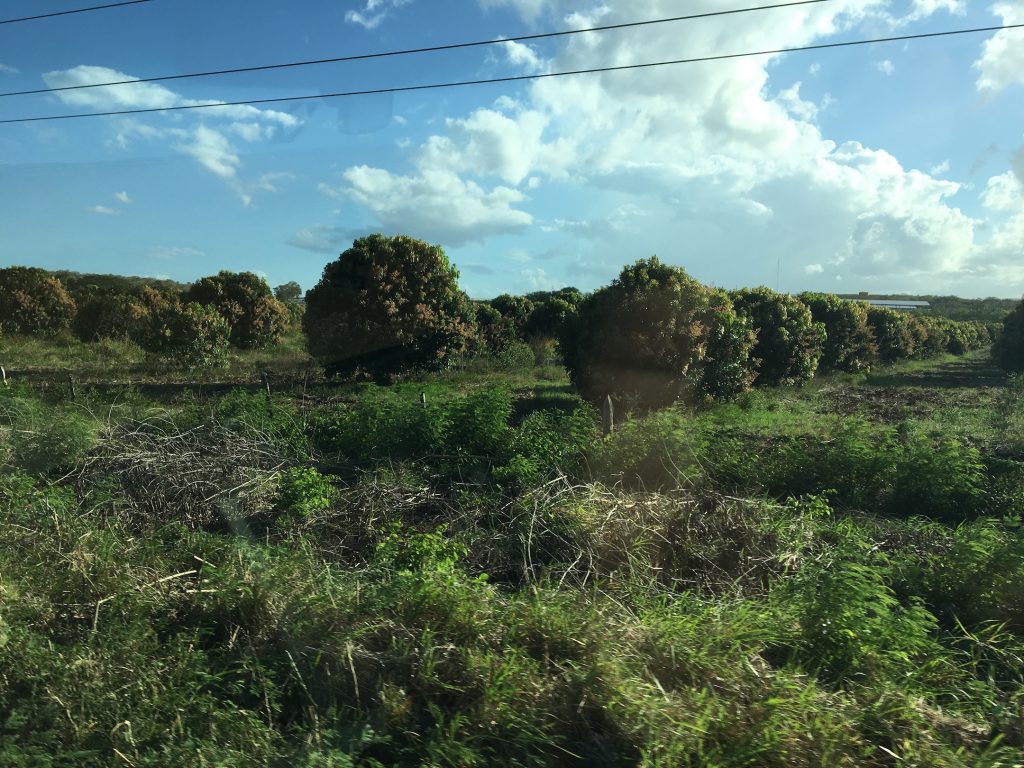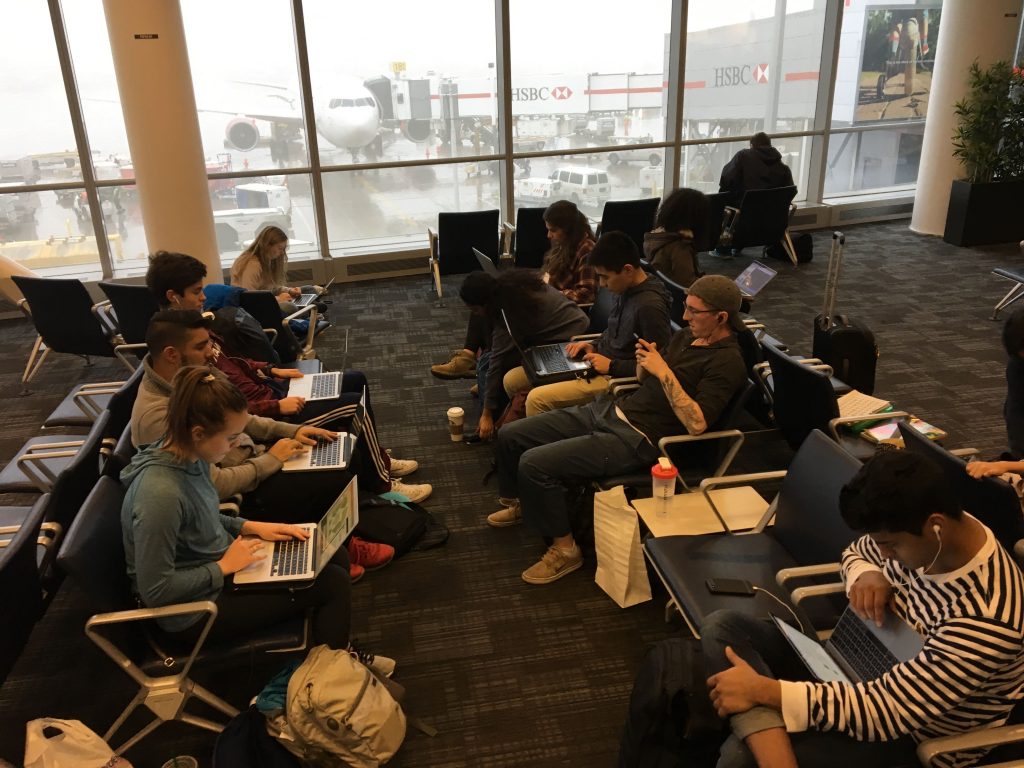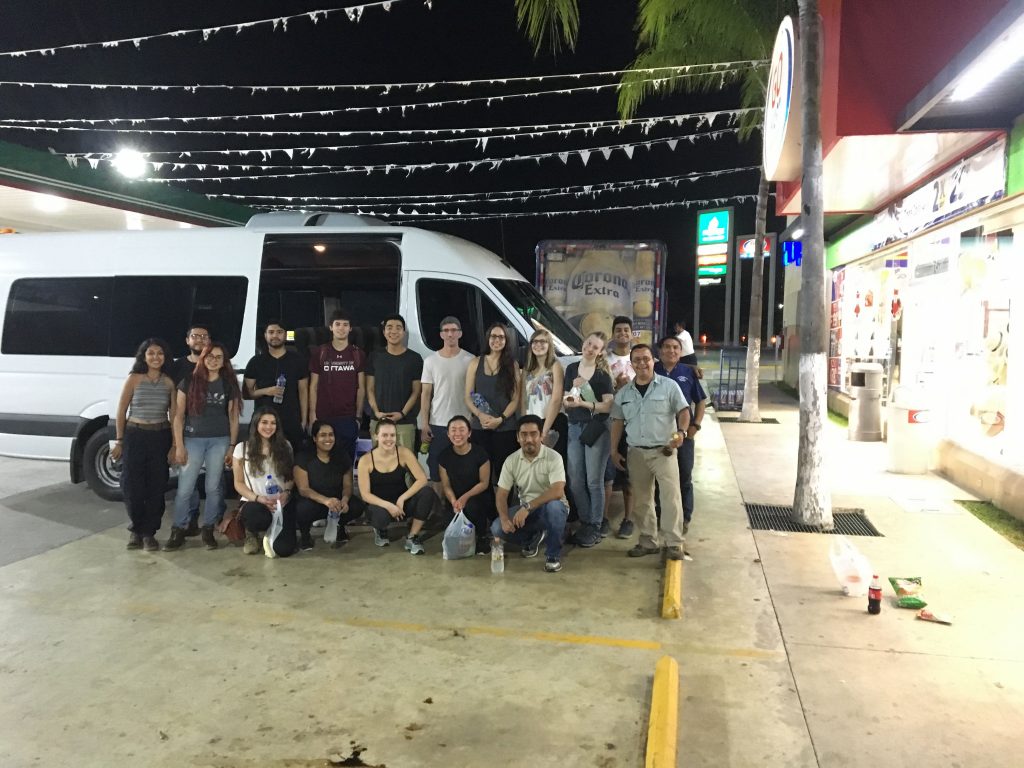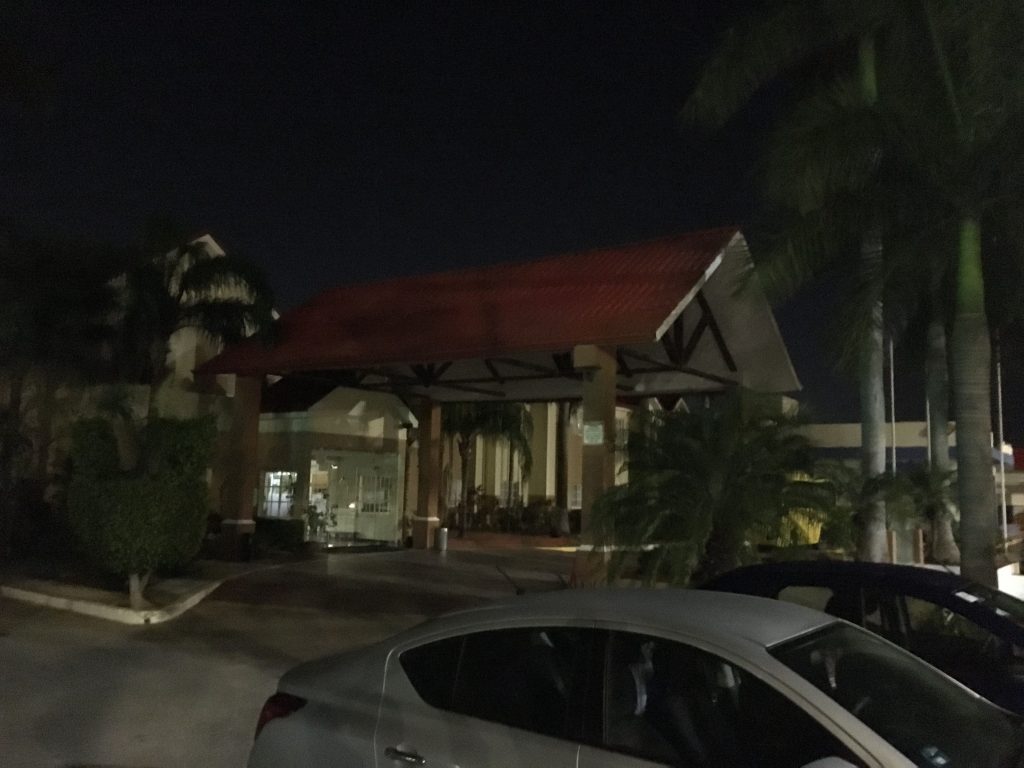Today was the first day back to school for kids back in Canada and yet another day in beautiful Mexico for us. The focus of the day was collecting data for our research projects and therefore, for many of us, this required an early start. From 5:30 am to 7:30 am wake ups, the various groups of students dispersed across the Kaxil Kiuic reserve to set up plots, take down observations and collect specimens.
Each group had a unique topic idea that was continuously being refined by the professors and the class in order to come up with 6 clear hypotheses and research ideas. There was a group study bird behaviour in response to known versus unknown bird calls. Another group was studying various tree measurements in relation to their place on a hill. Our group, formally known as the Rolling Stones… now known as the Beatles. Revised our research project from studying bugs under rocks and their abundance, to specifically Bark Beetles under logs. Each of these research projects gives students a chance to go out on the reserve, retrieve their own data and complete an analysis with the end goal of writing a scientific paper on the findings. Even this project alone sets this trip apart from studying back in Canada where we are limited to the classroom. By developing hypothesis and then being able to devise a plan with the given material to test these hypotheses we are learning critical analysis skills and many field techniques that could not be taught in the class.
After the morning of collecting bugs for my group and counting birds and trees for many others, we gathered in the lunch hall for a well-deserved breakfast consisting of fresh fruit and pancakes. Refreshed and ready for our day we each set out again to collect more data. Quadrants were being formed and birds were being counted while the day was still “cool.” Creating a controlled experiment, our group began setting up an arena for our bugs to determine which type of ecosystem they prefer the most. Groups brought back an abundance of information before lunch for another meeting to talk about what we had found. After a little more rejigging, all groups had either finished collecting data or had decided on a final study and hypothesis.
More than ready for lunch, students rushed to the kitchen for another one of the delicious meals cooked by local ladies; soup, chicken and fresh juice with much needed ice. Eating, chatting about our time in Mexico and relaxing before we headed back out to the field was a great part of our day. With 2 hours following to complete school work, analyze data and explore the reserve everyone went their separate ways. One group continued to work through the break, canvasing the cover from the trees above for their study.
At 4 pm, we all reconvened to determine what the next steps were out in the field and we all set off to finish the day with knew knowledge on our topics of choice. Our group used the remaining time to clean up our large mess of dirt, return our seven new Bark Beatle friends (Trevor, Penelope, Beetlejuice, Tina, Sherlock, Tyler and ‘Seven’) to their natural habitats and began analyzing our data.
After a few hours of groups working through excel and R software, which are used to analyze and display data, we listened to two more seminars by our Canadian and Mexican peers.
Dinner consisted of tamales along with a fresh tomato sauce, a crowd favourite. To end the night, we finished off our last seminar of the trip and everyone went to pack up for the next day when our adventured continued to Celestun.
Español
Hoy es el primer dia de regreso a la escuela de los chavos en Canadá, pero para nosotros es otro hermoso día en México. El objetivo del día fue colectar datos para nuestros proyectos de investigación, esto para varios de nosotros significó levantarnos muy temprano entre las 5:30 a 7:30 am. Así, los diferentes equipos nos dispersamos por la reserve para muestrear nuestras parcelas de studio y colectar ejemplares si era necesario.
Cada equipo planteó una idea única para su proyecto la cual fue refinada por los profesores junto con la clase para finalmente llegar a 6 hipótesis de trabajo para nuestros proyectos. Un equipo estidió la conducta de aves en respuesta a un llamado de un depredador conocido y no conocido. Otro equipo estudió la estructura de árboles y su densidad con relación a su ubicación a lo largo de un gradient de inclinaciónen los cerros. Nuestro grumo denominado los Rolling Stones, ahora mejor conocido como los “Beatles” cambiando nuestro proyecto de inicialmente buscar artrópodos bajo las rocas y su abundancia, a estudiar la conducta de escarabajos de la madera. Cada proyecto le dió a los estudiantes la oportunidad de explorer el bosque, generar sus propios datos para despues analizarlos y escribir el reporte de studio en format de artículo científico. Inclusive este proyecto solamente merece el viaje aparte de lo que normalmente hacemos de manera limitada en el salon de clases en Canadá. Mediante la propuesta de la hipótesis y ser capaces de diseñar un plan de trabajo con el material que contamos, estamos aprendiendo técnicas cruciales de campo y para el análisis de datos que de otra manera sería más dificil en un salón de clases.
Después de colectar escarabajos en la mañana, y para otros el contar aves y árboles, nos reunimos en el comedor para un merecido desayuno de frutas y hot-cakes. Ya descansados regresamos a trabajar en nuestros proyectos para colectar más datos; cuadrantes muestreados y para otros aves contadas aprovechando la hora fresca del día. Para nuestro grupo, la tarea fue diseñar un experiemento para determinar la preferencia de hábitat de los escarabajos, asociado a la humedad del suelo. Todos los equipos colectaron datos antes de la comida. Después nos reunimos para discutir lo que habiamos encontrado. Después de la discusión, varios equipos indicaron que habian generado suficientes datos para su proyecto decidiendo así finalizar sus estudios.
Ya más que lsitos para comer, nos apresuramos par air a comer otra deliciosa comida hecha por nuestras cocineras, sopa, pollo en escabeche y agua fresca con hielo. Comiendo y platicando sobre nuestros días en México y relajandonos antes de regresar al campo para completer la toma de datos y explorer otros sitios de la reserva. Nos dieron un par de horas para trabajar en nuestras tareas, explorer la reserve o analizar nuestros datos cad quien por su lado. Un equipo se fue a continuar su trabajo de campo sobre la descripción de árboles.
Nuevamente a las 4:00pm nos reunimos para conocer los planes siguientes y terminar el día con nuevos conocimientos derivados de nuestros proyectos. Los de nuestro equipo, decidimos ponernos a limpiar el sitio de trabajo y regresar nuestros amigos escarabajos (Trevor, Penelope, Beetlejuice, Tina, Sherlock, Tyler, y Siete) al bosque, su habitat natural; depués nos pusimos a analizar nuestros datos.
Despues de un rato de trabajo en Excel y R para analizar y graficar datos, nos fuimos a escuchar un par de seminarios más de nuestros compañeros.
Para la cena nos dieron tamales con una salasa de tomate, que les gustó a todos. Para terminar el día, escuchamos un ultimo seminario para después irnos a nuestros curators a empacar para estar listos a nuestro viaje y nueva aventura a Celestún.
